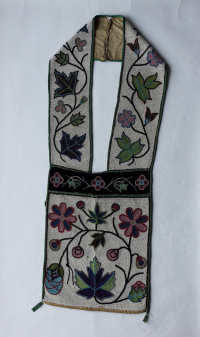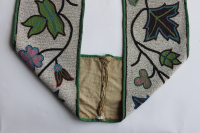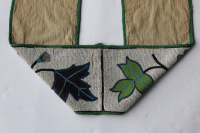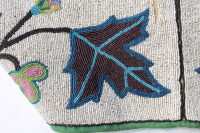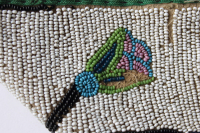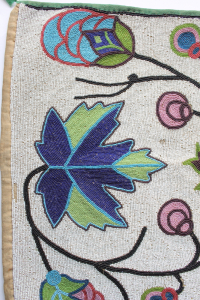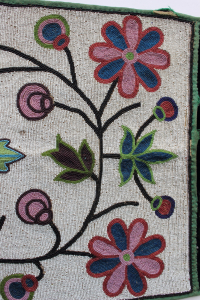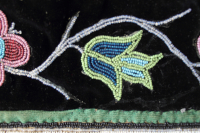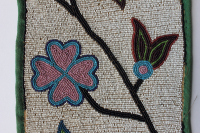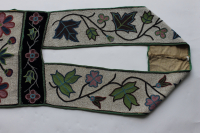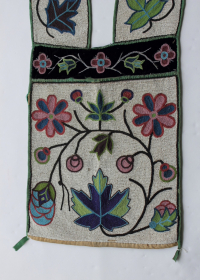Bandolier bag
Bandolier bag
Bandolier bag
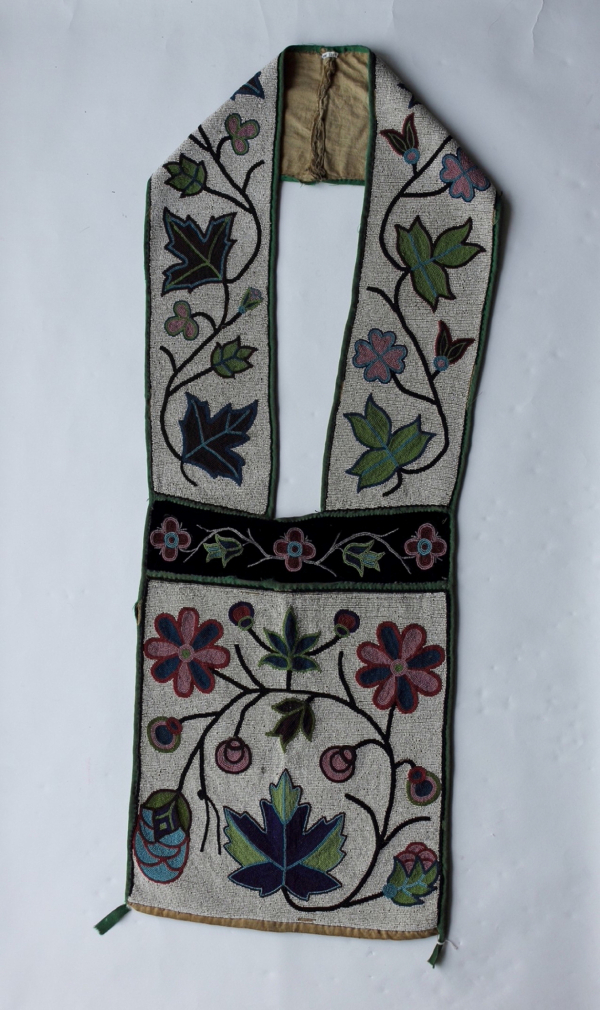
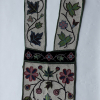

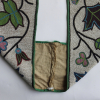

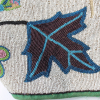
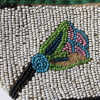
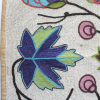
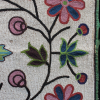
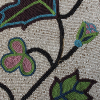


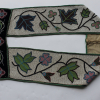

Pouch panel with two-piece shoulder strap, overlaid spot stitch applique, multicolour floral beading.
from catalogue records
Summary of catalogue records
Read More About This Relative
Canvas, velvet, cotton muslin, seed beads, wool tape, thread.
Rectangular pouch panel with two shoulder strap panels are canvas, Pouch back is black velvet at top and cotton muslin at bottom, All edges, except bottom edge, have green wool tape border, Wool tape ends create a tab at each bottom corner, Lining for pouch and strap is cotton muslin, Pouch sewn closed except for mid section.
Pouch front and shoulder panels are canvas completely covered with broad floral designs of flowers, leaves and buds along a triple black stem in a white background, Black beaded border, Pouch back is black velvet at top and cotton muslin at bottom, Velvet has beaded floral design of flowers and partially opened flowers along a translucent white double stem, Multi-coloured semi-translucent and opaque beads, Overlaid spot-stitch applique, Designs on shoulder panels are symmetrical but flowers altered slightly on each side.
Bandolier bags most likely originated in the Upper Great Lakes region during the 1840s and 1850s. Fashioned exclusively from European materials and adorned with thousands of beads, bandolier bags were primarily for show, as a symbol of identity, wealth and status. Although initially functional, by the late 19th and early 20th centuries many of the bags had false pouches or none at all. Sometimes called "friendship bags", they were often created as gifts to strengthen relationships within communities or between nations. By the 1870s they had become an important element of formal dress worn mainly at ceremonies and celebrations by men, and occasionally by women. They wore them - singly or several at a time - crossed over the torso or draped around the neck. The wearing of more than one bag was generally the prerogative of a leader or a person of high honour." (McCord, 2013). Bandolier adopted by Ojibwa in 19th century after seeing bullet pouches used by British soldiers. Bullet pouches were plain and decorated with crest or coat of arms. When idea adopted by Ojibwa, they were greatly prized and highly decorated ceremonial accessories. They became so highly prized by Ojibwa and other tribes (especially Sioux), that one bandolier could be traded for one pony. They became a status symbol of highest ranking Midewiwin priests.
From catalogue records.
Provenance
Hudson's Bay Company Winnipeg Fur Trade Department collected materials in preparation for 250th anniversary celebrations of the HBC in 1920. Many of these items were used in the Processions and Pow Wow at Lower Fort Garry in May, 1920.
Montreal: The McCord Museum, 2013; Print.
The HBC Fur Trade Department managed the Fur Trade Posts. In 1959, this department went under a new name: Northern Stores Division which undertook to collect materials in preparation for 250th anniversary celebrations of the HBC. Many of these items were used in the Processions and Pow Wow at Lower Fort Garry in May, 1920. In conjunction with this anniversary there were plans to have an exhibition of artifacts, but time did not permit for the gathering of a suitable collection. However of those pieces that had been amassed, by 1922, the HBC did establish a permanent collection and museum.
Based on catalogue records.
About This GRASAC Record
Manitoba Museum













Northeast Great Lakes Riverine
 Knowledge Sharing Platform
Knowledge Sharing Platform

